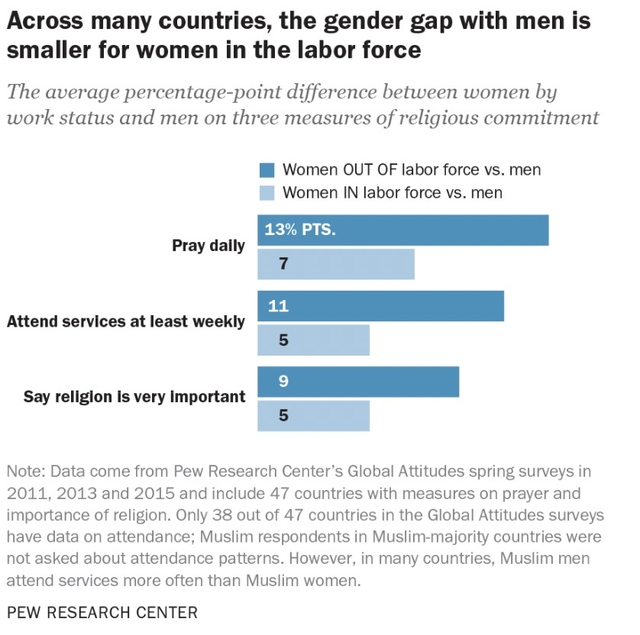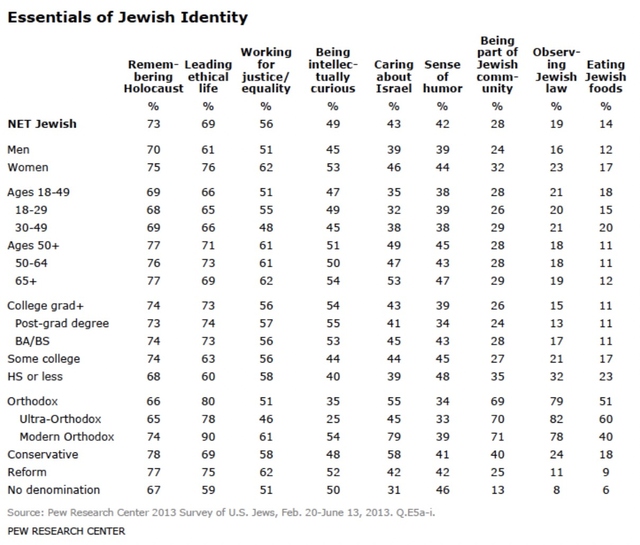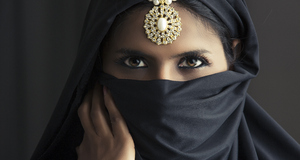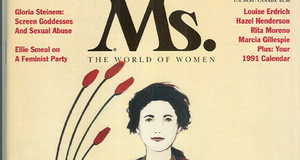Why are Women More Religious than Men?
By
2019, Vol. 11 No. 10 | pg. 1/1
KEYWORDS:
Scholars have since the 1980s tried to explain why women are more religious than men, but contradictory evidence complicates a precise answer (Pew Research Center 2016:54), so this essay evaluates some theories to explain women’s increased religiousity. It first critically analyses Woodhead’s (2007) theory of double deprivation. Next, I evaluate gendered religiosity in relation to Judaism. I explain how motherhood makes women more religious due to their socialisation. Then, I show how practices related to behaviour affirm women’s religious role in the family. Finally, I examine modernisation and second-wave feminism’s impact on the gender gap, and contemporary evidence suggesting that the gap will shrink. I conclude that the sociology of gender and religion can explain gendered religiosity by explaining socialisation in public and private domains. Woodhead argues that women are more religious than men because they are double deprived. She takes a socialist feminist stance by criticising how men’s experiences are treated as universal, and argues that women experience an iron cage in the domestic sphere. She argues men have ‘a wide range of sports and other leisure pursuits readily available’, however, it is different for women since they do not have the same amount of time when being a career woman and the primary care-taker in the household (Woodhead 2007:117-119). Woodhead claims that post-traditional women are therefore drawn into an exploration of ‘who I really am’ outside work and family spheres, which draws them into a direction of spirituality (Ibid:120). Woodhead continues: ‘rather than abandon religion altogether, some post-traditional women participate in the growing female-dominated sphere of “spirituality” where issues of beauty, health and self-identity often come into connection with one another’ (Ibid:121). First, in Israel, 55% of women participate in paid labour force (Swirski, et al. 2001:5). A newly developed New Age spiritual practice is amen meals. It developed because women wished to create a separate female space for worship (Shahar 2015:155-57). This practice is therefore made by women for women. The ritual involves a group of females gathering with food that they bless, the group responds ‘amen’, and they then eat it. The foods and drinks symbolise various lifeworld aspects; i.e. vegetables for health, fruits for fertility/children, and wine for marriage (Ibid:157). The women state their participation is related to a ‘desire to acquire spiritual and emotional-social energies’ (Ibid:159). Here, Elisheva elaborates: ‘an amen meal is so feminine, it is truly divine worship that comes from the heart, from our souls, from our feelings’, meaning women link their religiosity to femininity, which is further linked to sensitivity (Ibid:161). Woodhead connects spirituality to acquiring an understanding of one’s identity, emotions, and life. She would here argue that women’s state of being double deprived means they turn to a spiritual sphere since it values female characteristics (Woodhead 2007:122-24).However, Shahar (2015:158) has been unable to find quantitative data for participants, and explains that some groups only meet for special occasions, and others on a monthly/weekly basis. Consequently, it can be concluded that this spiritual activity is not widespread. Regarding Woodhead’s claim about leisure activities, 55% of Israeli men do sports compared to 24% women. However, women ‘visit the theatre more often than men’ (50% women and 43% men), and they read more (67% women and 57% men) (Lior 2012). Thus, while Ruah-Midbar (2012) offers a variety of New Age spiritual practices in Israel, she does not account for the popularity, which makes it difficult to evaluate the significance of these activities at the moment. So, it can be concluded that Woodhead’s theory of double deprivation does not explain why women are more religious than men; if it did, women would be significantly more involved, and she does not account for other leisure activities. Having said that, there is not a universal tool to accurately measure gendered religiosity. Lazerwitz (1961) claims that Jewish men’s greater synagogue attendance makes them more religious. Specifically, Sullins (2006:44-45) shows that 68.8% of Israeli men attend synagogue weekly/often while 52.9% of women do. However, it is noteworthy that 92.9% of women consider themselves ‘a religious person’ compared to 91% of men. Here, it should be noted that in more religious societies, men and women are likely to have more similar views (Trzebiatowska and Bruce 2012:12). In America, a pluralistic nation, 36% of Jewish women fully believe in God, while 32% of men do – however, 69% of the U.S. general public fully believes in God (Pew Research Center 2013:74), which shows Jews are fairly secular in America. While I acknowledge that more men attend synagogue, it is also important to note that this reasoning is Christocentric. Sered (1995:295-96) explains:
She argues that Christocentrism treats the former aspects as more honourable and important than the latter, and states this is not a valid argument for evaluating gendered religiosity (Ibid:296). Thus, while Jewish men score higher on primary religious behaviour, women score higher on secondary (Trzebiatowska and Bruce 2012:126). Hence, women rate the importance of God to their lives higher than men. In the Israeli WVS, 57.7% of women rate it as ‘very important’, whereas 48.9% of men do (B.I. Cohen Institute for Public Opinion Research 2001:v196). While this is not a major difference, it demonstrates that, despite being excluded from various formal religious settings and being excluded from many mitzvoth due to the Jewish patriarchal structure (Sullins 2006:874), women still consider God more important to their lives. For this reason, I attempt to put aside a more Christocentric interpretive scheme. Women are more religious than men because of their socialisation. Gender is a social construct, where women are socialised into roles emphasising nurturance, submission, and gentleness, whereas men are instrumentally socialised (de Vaus and McAllister 1987:472). One thing linked to women’s nurturing socialisation, is their child giving abilities. While the biological make-up of the sexes does not explain religiosity (Trzebiatowska and Bruce 2012:177), women’s birth-rearing abilities structure their social life (Ibid:96). Moreover, some females describe giving birth ‘as a modern miracle, a defining moment, and a spiritual experience’, and, consequently, pious women might deepen their faith, while secular women might use the terminology to describe the event (Ibid:98). A reason why childbirth is important, is because the ‘rite of passage’ is linked to various celebrations and rituals. Pious women will naturally embrace these religious affirmations, but also secular women ‘will find themselves drawn into a positive’ religious relationship (Ibid:97-98). Furthermore, the mother is often the primary caretaker, and a part of that job includes explaining ‘basic religious ideas to the infants’ (Ibid:100). Accordingly, Martin (1967) claims: ‘parents feel that the church is good for their children and that mothers, as primary caregivers, go to church to encourage their children’s involvement’ (de Vaus and McAllister 1987:473). This might also be the case if the parents do not practice religion since some desire passing on a religio-ethnic heritage, or that the children themselves should determine their religious interest/involvement (Trzebiatowska and Bruce 2012:100). Women’s socialisation of doing more emotional labour indicates women have a responsibility for the development of the whole individual (Heelas and Woodhead 2005:102). This relationship with religious institutions will bring them closer to religious rituals, beliefs, officials, and self-reflections regarding their religiosity/spirituality (Trzebiatowska and Bruce 2012:112). So, considering world religions portray ‘themselves as religions of love’, ‘women are more likely to be religious because this life-world resonates with them to an extent that it does not with men’ (Ibid:105-06). This is evident in Judaism. Judaism is matrilineal because women are considered ‘naturally good hearted’ (Rabbi Litt n.d.). Specifically, women have a higher degree of binah (intelligence, understanding, intuition), and some argue women represent God’s ideal more than men because of this (Rich n.d.). Israeli women’s degree of religiosity suggests that they consider childbirth within a religious framework (Sered 1991:9). However, it was not the act of giving birth women consider religious, but, rather, the aftermath when they began growing a relationship with their new-born. Nevertheless, 49 out of 55 women in this study performed fertility/childbirth rituals – 109 different rituals related to motherhood and babies were recorded (Ibid:12-14). Thus, women’s religiosity was based on a specific child, and they felt a miracle after giving birth to that particular baby (Ibid:17-18). Furthermore, more Israeli women (31.1%) find it important to teach their children about religious faith than men (26.7%) (B.I. Cohen Institute for Public Opinion Research 2001). The woman is therefore the religious enabler who ensures the faith is passed on (Maher 2007:34). Hence, in recent years, some women have started wearing kippah ‘after birthing daughters, or upon their daughter’s Bat Mitzvah, out of a desire to be a good role model’ (Darwin 2017:94). Traditional Judaism additionally emphasises ‘the spiritual influence that the woman has over her family’ (Rich n.d.). Fundamentally, women ‘care for their kin through participating in the holy’ (Sered 1988:130). This is evident in Sered’s (1995:295-96) observation about illiterate women in synagogue (page 3). Their domestic religion centres around myths, rituals, symbols, theology, and institutions, and encompasses others’ well-being, happiness, health, security, social relationships, and interdependence (Sered 1988:130). Thus, Hartman (2016:426) found that domestic roles (especially parenthood) strengthened ‘women’s Jewish identity’. To summarise, women are more religious than men because their socialisation emphasises care, empathy, and nurturing. When becoming a mother, this is strengthened since they are the primary care-giver. This is, on a fundamental level, emphasised in Judaism, since it is matrilineal. Women’s domestic role allows them to raise the children with values associated with religious institutions, which therefore appeals more to women. This gender appeal consequently becomes an amplifying circle, which thereby self-reinforces its female appeal, meaning men are likely to self-exclude (Trzebiatowska and Bruce 2012: 22). Women are more religious than men because their practices are practical and linked to the domestic sphere. There are three mitzvoth specifically for women: lightning candles, separating challah dough, and ‘sexual separation during a woman’s menstrual period and ritual immersion afterwards’ (Rich n.d.). Rabbi Greenberg explains that these mitzvoth are physical phenomena (Myers and Litman 1995:63), which make religious practices practical and continuously repeated. Moreover, the most mundane events – such as coming home Friday evening for the weekend – can be viewed as sacred by ritualising it. Essentially, Shabbat is referred to as a queen/bride, whom the family welcomes (Heschel 1991:35). Female religiosity is therefore more domestic than institutional, since they prepare the homes for the Shabbat Queen, and welcome her with Kiddush [Shabbat blessing and meal] when the husband comes home from synagogue (Sered 1988:129). An example of this is Kitchen Judaism. As established, the socialisation of females emphasises caring behaviours, and cooking and feeding beings is caring, and it has a supernatural dimension. Kosher food is highly controlled, which requires extensive religious knowledge. Thus, as women learn to handle kosher food, they also consider themselves ‘guardians of law and tradition’, meaning they are actively doing Jewishness and exercising ‘appropriate interpersonal conduct’ (Trzebiatowska and Bruce 2012:142-43). Thus, it is not significant per se that 94% of ultra-Orthodox American Jewish men keep kosher, given women are in charge of keeping a kosher kitchen (i.e. separate meat and dairy products), and preparing the food. So, the majority of the ultra-Orthodox men therefore take kosher for granted, and do not actively participate in keeping kosher (Nishma Research 2017:21). Table 1: Levels of Observance amongst American ultra-Orthodox Jews (Nishma Research 2017:21) On a family level, food – especially Shabbat and holiday meals – ‘makes the individual really feel Jewish’ (Sered 1988:133). The child internalises their socio-historical in-group identity in the kitchen due to the emotions and senses associated with certain foods (Ibid:132). Moreover, cooking and feeding the hungry is both the most important mitzvah, and ‘the greatest religious act that a woman’ can perform (Ibid:131). Therefore, cooking fulfils ‘physical, cultural, and spiritual needs’, and it honours the holiday – so if they do not attend synagogue they honour the Shabbat and God through cooking (Ibid:136). Hence, women are more religious than men because their practices are this-worldly, and therefore repeatedly practiced (weekly, monthly, and annually), which reinforces a religious dimension of life. Food becomes sacred through rituals, and since food is essential for survival, women become guardians of the household, which gives them a practical family responsibility. Thus, the mitzvoth’s visibility maintains a stronger religious attachment. Women are more religious than men because they entered the public domain later. Historically, men have, to a higher degree, experienced positive interactions with out-groups due to their labour and public involvement. Essentially, they were more likely to deal with positions that bureaucratically and rationally dealt ‘with people of diverse religious backgrounds’ (Trzebiatowska and Bruce 2012:165). This process meant that religion became a personal choice for men earlier (Ibid:157). Given women were isolated from secularisation (Ibid:166), religion became ‘increasingly concentrated on the family, the home, and sexual and social reproduction’, which are historically female constructed roles, meaning internal secularisation maintains a female appeal (Bruce 1996:220), yet second-wave feminism also encouraged female public engagement. There is a correlation between Jewish feminism and institutional changes. Jewish feminism developed alongside second-wave feminism in the 1970s, where Liberal Jewish feminists focused on women’s and LGBTQ+ people’s rights (Milligan 2014:439-40). Feminists have met for discussions, rituals, prayers, and for working towards equality on a congregational level (Heschel 1991:38-39). Moreover, through sociological research, they ‘have successfully calmed Jewish fears’ of the destruction of families if females became rabbis (Seidler-Feller 1984:82-83). Consequently, Reform Jew Sally Priesand became the first female rabbi in 1972 and the Reconstructionist denomination followed by ordaining Sandy Eisenberg Sasso in 1974 (Maher 2007:44-45). In contemporary America, 40-68% of non-Orthodox rabbinic students are female (Rabbi Geller 2010). Additionally, women now count as a part of the minyan in most non-Orthodox congregations (Rabbi Barenblat 2006), and Prayerbooks have been changed to be gender inclusive. An example of this is the Amidah that now includes the matriarchs instead of only the patriarchs (The Movement for Reform Judaism 2011:75). While 65% of American Jews are employed (Pew Research Center 2013:63), 70% of American Jewish females under age 44 are in paid employment (Fishman 1995:258). Consequently, this means women teach fewer practices since they do not have time, and currently only 52% of American Jews know the Hebrew alphabet, and only 13% ‘can understand all/most words’ (Pew Research Center 2013:63), which directly affects practices and prayers. Table 2 supports this by demonstrating that ‘the religious gender gaps between women working in the labor force and men are much smaller than the gaps between women not working for pay and men’ (Pew Research Center 2016:59). The percentages are almost halved in these areas. Table 2: Gender Gap in Labour Force (Pew Research Center 2016:60) Hence, the focus on domestic duties, that, as established, strengthens women’s religiosity, decreases with the increase of work; as a result of positive interaction with out-groups and limited time. These results are consistent in the Western world (Pew Research Center 2016:61), which demonstrates that there is solid reason to predict that the gender gap will continue to decrease with the rise of social gender equality. Additionally, there is evidence for a rapid increase of non-Jews in America; the National Jewish Population Survey 2000-2001 found that 7% identified as ‘Jews of no religion’, and PEW found 22% in 2013 (Pew Research Center 2013:32), which, by looking at engagement, is likely to grow. Here, 61% of American individuals in households do not have synagogue membership and 71% do not hold memberships to other Jewish organisations (Ibid:112). What more is, even though women in every area in Table 3 value identity factors higher, most of them are secular areas – i.e., a sense of humour is not a primary religious characteristic. Only 23% of women find it essential to observe the halacha [Jewish law] and only 17% eating Jewish food, which, as explained, is a primary domestic religious characteristic. Additionally, ‘leading [an] ethical life’ is vague in the sense that most people desire living ethically correct, but given only 19% of NET Jewish find the halacha essential, one can assume that ethical behaviour does not directly relate to those laws (Ibid:57). Table 3: Essentials of Jewish Identity (Pew Research Center 2013:57) In conclusion, women are more religious than men because of their domestic socialisation. First, women are socialised to be more caring, which appeals to the major world religions. This is evident in Judaism given it is matrilineal and women are considered the guardians of the family. Second, their focus on kinship constantly affirms their role as primary care-takers, which becomes an amplifying circle of religiosity. Furthermore, their mitzvoth directly correlate to their life-worlds, i.e. cooking. What some consider a principle for surviving is sacred to many Jewish women, and feeding others is thus a hyper-religious act. Third, while men’s religiosity decreased as an unintended consequence of modernisation, second-wave feminism affected Jewish women, which has led to public roles and greater inclusiveness on a practical and scriptural level. And finally, women’s public engagement shows a decrease of religious commitment. To return to my starting point, secondary religious characteristics are equally valid as primary acts, since they define other social spheres and relationships. Further research should promote a gender inclusive interpretive scheme supported by quantitative data to conceptualise primary and secondary religiosity, and researchers should further theorise the correlation between the liberation movement, public inclusiveness and modernisation. ReferencesAbeles, M. (1991). Features of Judaism for carers when looking after Jewish patients. Palliative Medicine, 5, 201-205. B.I. Cohen Institute for Public Opinion Research. (2001). Israel 2001. Tel Aviv: World Values Survey. Bruce, S. (1996). Religion in the Modern World: From Cathedrals to Cults. Oxford: Oxford University Press. Darwin, H. (2017). Jewish Women's KIPPOT: Meanings and Motives. Contemporary Jewry, 37, 81-97. de Vaus, D., & McAllister, I. (1987, Aug). Differences in Religion: A Test of the Structural Location Theory. American Sociological Review, 52(4), 472-481. El-Or, T. (1995). Ultraorthodox Jewish Women. In S. Deshen, C. S. Liebman, & M. Shokeid (Eds.), Israeli Judaism: Studies of Israeli Society (Vol. VII, pp. 149-169). London: Transaction Publishers. Fishman, S. B. (1995). Triple Play: Deconstructing Jewish Women's Lives. In T. M. Rudavsky (Ed.), Gender and Judaism: The Transformation of Tradition (pp. 255-277). New York: New York University Press. Hartman, H. (2016). Gender Differences in American Jewish Identity: Testing the Power Control Theory Explanation. Review of Religious Research, 58, 407-431. Hartman, H., & Hartman, M. (2003). Gender and Jewish Identity. Journal of Contemporary Religion, 18(1), 37-60. Heelas, P., & Woodhead, L. (2005). The Spiritual Revolution. Oxford: Blackwell. Heschel, S. (1991). Jewish Feminism and Women's Identity. Women & Therapy, 10(4), 31-39. Kedem, P. (1995). Dimensions of Jewish Religiosity. In S. Deshen, C. S. Liebman, & M. Shokeid (Eds.), Israeli Judaism: Studies of Israeli Society (Vol. VII, pp. 33-59). London: Transaction Publishers. Lior, G. (2012, Dec 16). What do Iraelis do in their free time? Retrieved Nov 24, 2017, from https://www.ynetnews.com/articles/0,7340,L-4318880,00.html Maher, M. (2007). A Break with Tradition: Ordaining Women Rabbis. Irish Theological Quaterly, 72, 32-60. Milligan, A. K. (2014). Expanding Sisterhood: Jewish Lesbians and Externalizations of Jewishness. Journal of Lesbian Studies, 18(4), 437-455. Myers, J., & Litman, J. R. (1995). The Secret of Jewish Femininity: Hiddenness, Power, and Physicality in the Theoology of Orthodox Women in the Contemporary World. In T. M. Rudavsky (Ed.), Gender and Judaism: The Transformation of Tradition (pp. 51-77). New York: New York University Press. Nishma Research. (2017). The Nishma Research Profile of American Modern Orthodox Jews. New York: Nishma Research. Pew Research Center. (2013). A Portrait of Jewish Americans. PEW Research Center. Pew Research Center. (2016). The Gender Gap in Religion Around the World. Pew Research Center. Rabbi Barenblat, R. (2006, Feb 22). What makes a minyan? Retrieved Nov 23, 2017, from http://velveteenrabbi.blogs.com/blog/2006/02/what_makes_a_mi.html Rabbi Geller, L. (2010, Sep 08). What the Success of Women Rabbis Means for Judaism. Retrieved Nov 23, 2017, from https://www.huffingtonpost.com/rabbi-laura-geller/what-the-success-of-women_b_673977.html Rabbi Litt, G. (n.d.). Judaism Passed Through the Mother. Retrieved Nov 21, 2017, from http://www.jewishanswers.org/ask-the-rabbi-category/the-basics-of-judaism/?p=933 Rich, T. R. (n.d.). Judaism 101: The Role of Women. Retrieved Nov 15, 2017, from http://www.jewfaq.org/women.htm Ruah-Midbar, M. (2012). Current Jewish Spiritualities in Israel: A New Age. Modern Judaism, 32(1), 102-124. Seidler-Feller, C. (1984, Winter). Female Rabbis, Male Fears. Judaism, 33(1), 79-84. Sered, S. S. (1988, Jul). Food and Holiness: Cooking as a Sacred Act among Middle-Eastern Jewish Women. Anthropology Quarterly, 61(3), 129-139. Sered, S. S. (1991, Fall). Childbirth as a Religious Experience? Voices from an Israeli Hospital. Journal of Feminist Studies in Religion, 7(2), 7-18. Sered, S. S. (1995). The Religion of Elderly Oriental Jewish Women. In S. Deshen, C. S. Liebman, & M. Shokeid (Eds.), Israeli Judaism: Studies of Israeli Society (Vol. VII, pp. 285-300). London: Transaction Publishers. Shahar, R. N. (2015). At 'Amen Meals' It's Me and God' Religion and Gender: A New Jewish Women's Ritual. Contemporary Jewry, 35, 153-172. Stein, J. (1998, Aug 19). A Piece of My Mind: The Holy Society. JAMA, 208(7), 654. Sullins, D. P. (2006, Nov). Gender and Religion: Deconstructing Universality, Constructing Complexity. American Journal of Sociology, 112(3), 838-880. Swirski, S., Konor-Attias, E., Swirski, B., & Yecheskel, Y. (2001). Women in the Labor Force of the Israeli Welfare State. Tel-Aviv: Adva Center. The Movement for Reform Judaism. (2011). Seder Ha-Tefillot - סדר התפילות. London: The Movement for Reform Judaism. The United Synagogue. (2014, Dec 04). United Synagogue Womens Voluntary Chevra Kadisha. Retrieved Nov 21, 2017, from https://www.theus.org.uk/article/united-synagogue-womens-voluntary-chevra-kadisha Thompson, E. H. (1991, Dec). Beneath the Status Characteristic: Gender Variations in Religiousness. Journal for the Scientific Study of Religion, 30(4), 381-394. Trzebiatowska, M., & Bruce, S. (2012). Why are Women more Religious than Men? Oxford: Oxford University Press. Woodhead, L. (2007). Why so Many Women in Holistic Spirituality? A Puzzle Revisited. In F. Flanagan, & P. Jupp (Eds.), A Sociology of Spirituality (pp. 115-126). Aldershot: Ashgate. Suggested Reading from Inquiries Journal
Inquiries Journal provides undergraduate and graduate students around the world a platform for the wide dissemination of academic work over a range of core disciplines. Representing the work of students from hundreds of institutions around the globe, Inquiries Journal's large database of academic articles is completely free. Learn more | Blog | Submit Latest in Sociology |





















